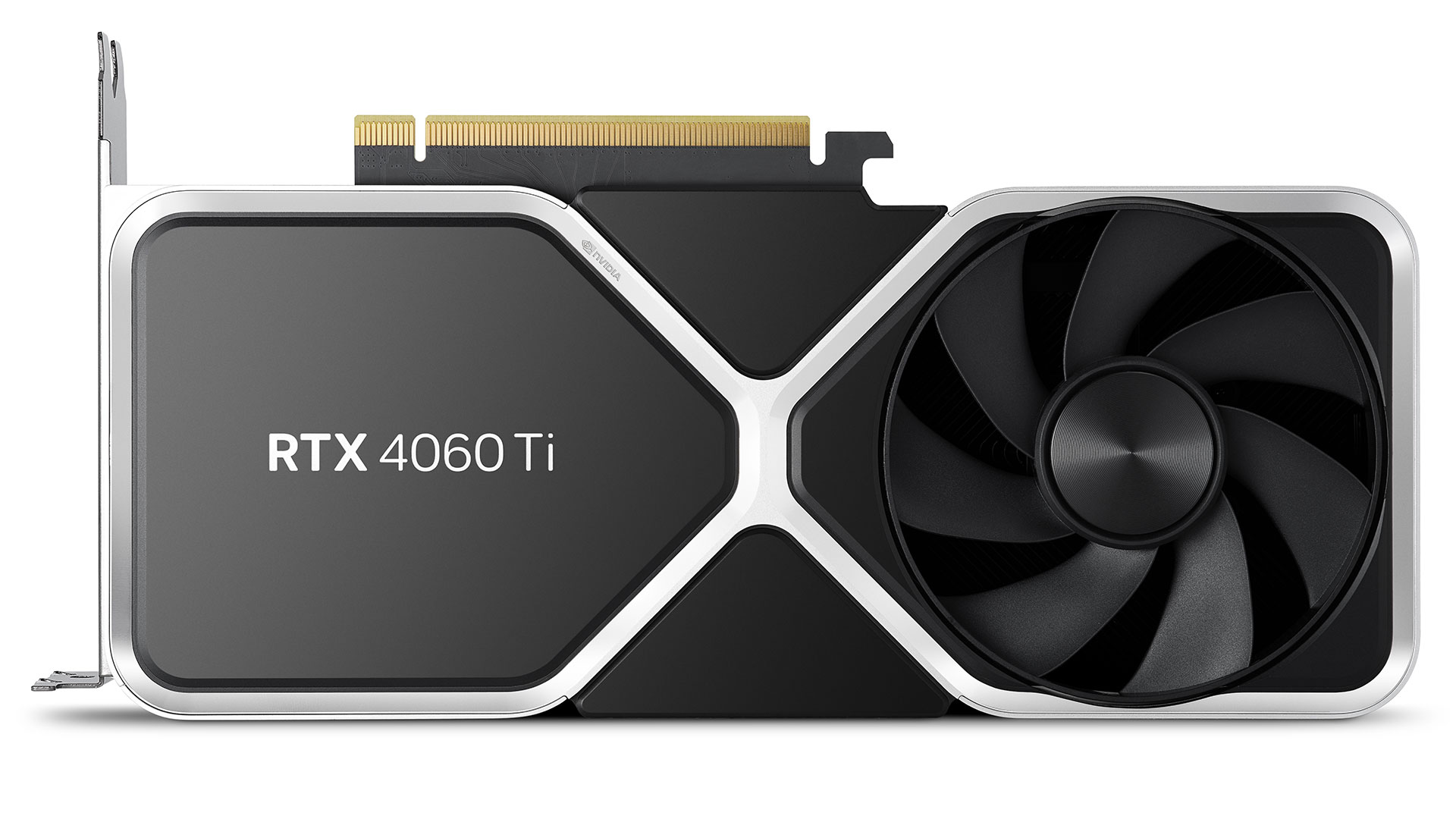
Nvidia revealed its plans for the upcoming RTX 4060-class graphics cards today. The RTX 40-series ranks at or near the top of our GPU benchmarks hierarchy and already includes several entrants in our list of the best graphics cards, with one major caveat: They're all expensive. That will change in a big way with the arrival of the RTX 4060 Ti 8GB, starting at $399 — which will directly take over from the existing RTX 3060 Ti. The RTX 4060 and RTX 4060 Ti 16GB meanwhile will arrive in July. The 16GB 4060 Ti will be priced at $499, so that's $100 extra for double the VRAM, but the RTX 4060 will come with 8GB for only $299. Tasty!
This is great news, as many people have been looking for more reasonably priced upgrades ever since the first Nvidia Ada Lovelace GPUs launched last October. It's also worth pointing out that four of the five top GPUs in the Steam Hardware Survey are from the xx60-class: GTX 1060, RTX 3060, RTX 3060 Laptop GPU, and RTX 2060. While the earlier models may have been priced at $200–$300 for the 1060, and $300–$350 for the 2060, it looks as though the 4060-class cards will mostly inherit the 3060-class pricing. That's probably about as good as we can expect given the current market and economic conditions.
Let's hit the specs table and see what we can expect from the new GPUs when they arrive.
As you'd expect, the upcoming RTX 4060 Ti and RTX 4060 boast substantially higher compute performance than their predecessors, thanks to their significantly higher clock speeds. We don't have all the specs for the RTX 4060, yet (we're missing the boost clock), though we have core counts and TFLOPS figures — we've put in estimates with question marks as placeholders on clock speed for now.
Starting at the top, transistor counts for AD106 have increased by just over 30% relative to GA104. Meanwhile, the chips are substantially smaller, thanks to TSMC's N4 process node, measuring just 187.8 mm^2 compared to 392.5 mm^2. If you want to look at AD107 and GA106, things are similarly lopsided in favor of Ada: 18.9 billion transistors in 158.7 mm^2, compared to 12.0 billion transistors in 276 mm^2. Transistor density on the other Ada Lovelace GPUs ranges from around 109 million transistors per square millimeter (AD104) to 125 Mtrans/mm^2 (AD102), with an intermediate 121 Mtrans/mm^2 for AD103. AD106 lands at 122 Mtrans/mm^2, while AD107 gives 119 Mtrans/mm^2. It looks like AD104 ends up being the "worst" chip as far as transistor density is concerned.
The number of SMs (Streaming Multiprocessors) in the RTX 4060 Ti and AD106 has decreased relative to GA104 and the RTX 3060 Ti, with 34 SMs out of a maximum of 36 for the entire chip, compared to 38 SMs out of a potential 48 for its predecessor. But boost clocks are about 50% higher, which ends up yielding a net 36% improvement in theoretical teraflops of compute. The tensor core compute performance has likewise improved by 36%, but Ada Lovelace also adds FP8 support. With appropriate AI and deep learning workloads, that can potentially deliver up to 172% more compute than the 3060 Ti.
Note that the theoretical compute figures also don't account for other architectural changes that could further improve performance. RTX 4060 Ti supports DLSS 3, SER (Shader Execution Reordering), DMM (Displacement Micro-Meshes), and OMM (Opacity Micro-Maps), all of which can improve performance if a game uses those features.
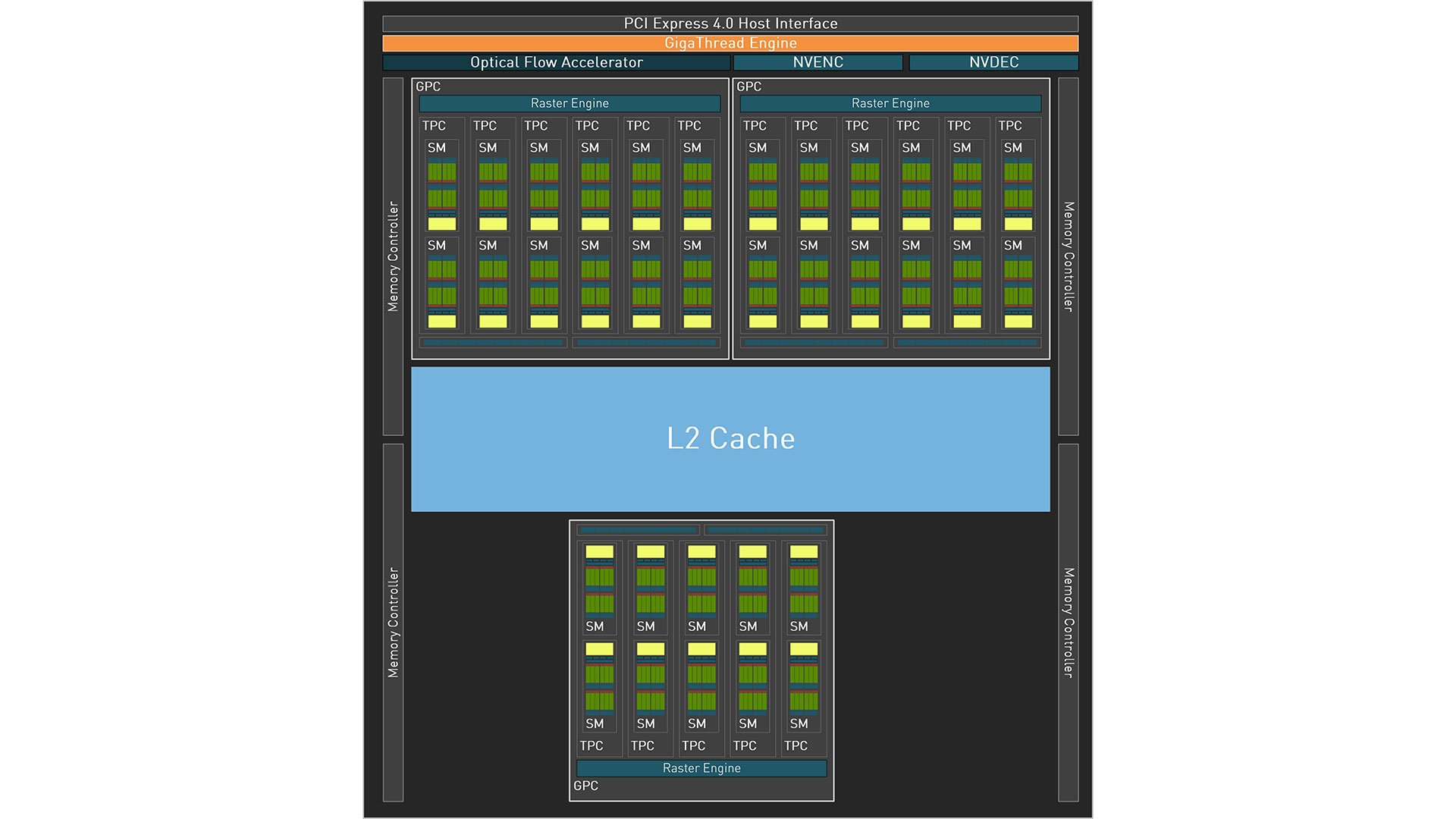
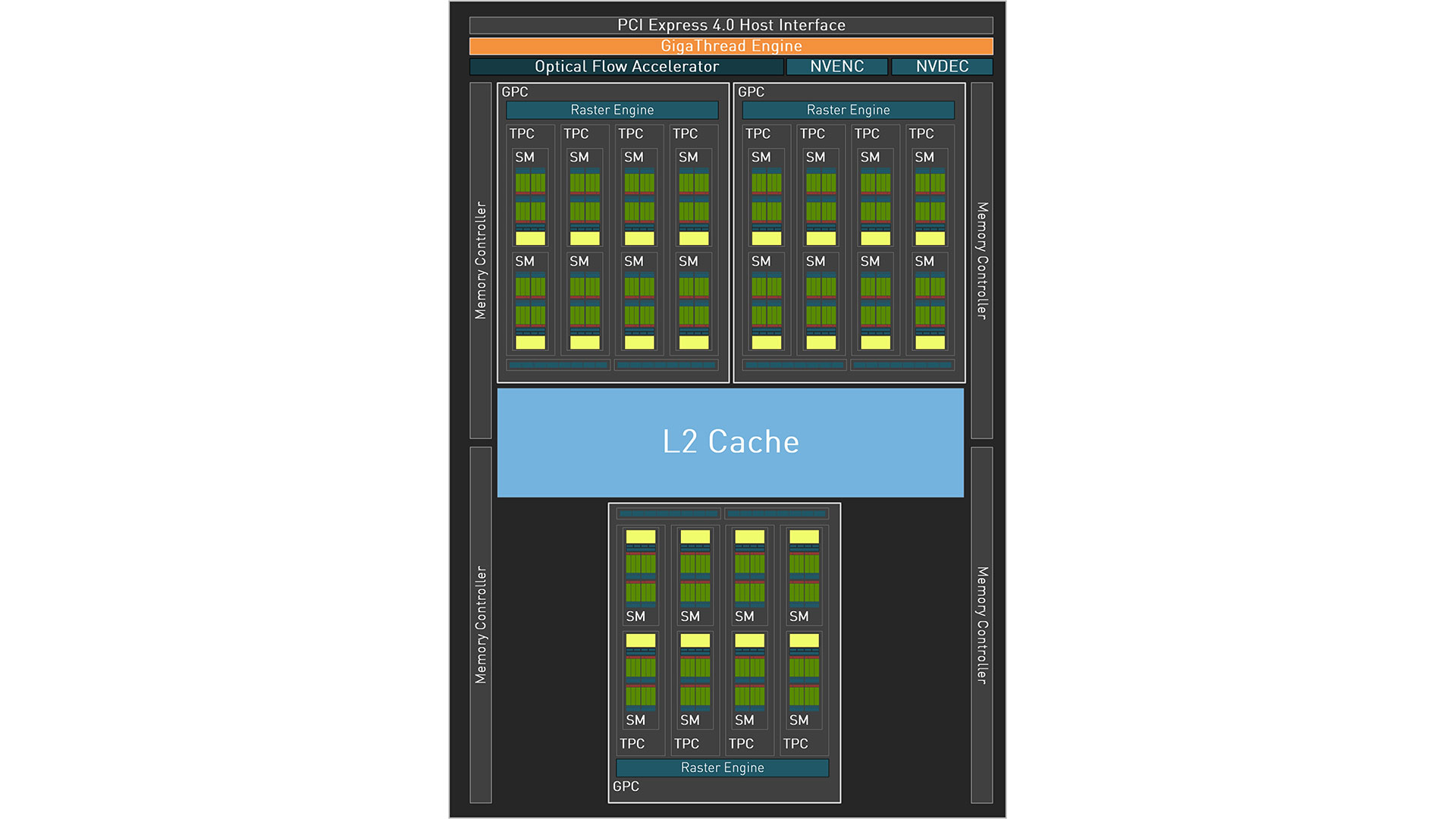

Other aspects haven't necessarily increased, like VRAM capacity. There's an 8GB 4060 Ti, but there will also be a 16GB variant. The two 4060 Ti models are, we're told, identical in specs, with the only difference being the amount of VRAM present. That 16GB card warrants a bit more explanation, however.
Most consumer graphics cards put the VRAM on one side of the PCB (printed circuit board). There are a few exceptions, like the RTX 3090, and before that the Titan RTX and Titan X (Maxwell) also used "clamshell" memory mode with two chips per channel on opposite sides of the PCB. If you look at that short list, you'll notice one common theme: Those are all extremely expensive "halo" parts from different generations. Now, Nvidia is going to offer up an RTX 4060 Ti with 16GB, using clamshell mode.
It costs more to do that, which is why it's normally reserved for extreme parts like the Titan class GPUs. It's not just the increase in cost for the extra capacity, but also more expensive chip placement and soldering. The net result is a $100 increase in price compared to the 8GB model. There will certainly be games where the extra VRAM proves useful, but we also have to wonder if, at that point, gamers might be better off moving up to an RTX 4070, even if it "only" has 12GB VRAM.
At the same time, there have been numerous mods posted over the past couple of years where people have doubled the amount of VRAM present on various GPUs. Clearly, there's demand for more VRAM by a certain portion of the market. It would be nice if Nvidia embraced that market with double the VRAM GeForce cards, but don't hold your breath — that's usually reserved for Nvidia's professional GPUs now.



Wrapping up the specs, there's a narrower 128-bit memory interface this round, compared to a 256-bit interface for the RTX 3060 Ti and 192-bit for the RTX 3060. The pure memory bandwidth drops from 448 GB/s on the 3060 Ti to 288 GB/s on the 4060 Ti, but the larger 32MB L2 cache provides an effective bandwidth of 554 GB/s according to Nvidia. The RTX 4060 meanwhile has slightly slower VRAM with 272 GB/s of raw bandwidth and an effective 453 GB/s thanks to its 24MB L2 cache.
That's based on L2 cache hit rates (meaning, memory accesses that don't have to go to VRAM) compared to what would have happened if the cache size had remained the same — and that's across a test suite run at 1080p, 1440p, and 4K, we're told. All of that makes sense, as we've been seeing the benefits of GPUs with larger caches since AMD released the RDNA 2 architecture and RX 6000-series GPUs with their various sized Infinity Caches.
Nvidia GeForce RTX 4060 Ti Founders Edition






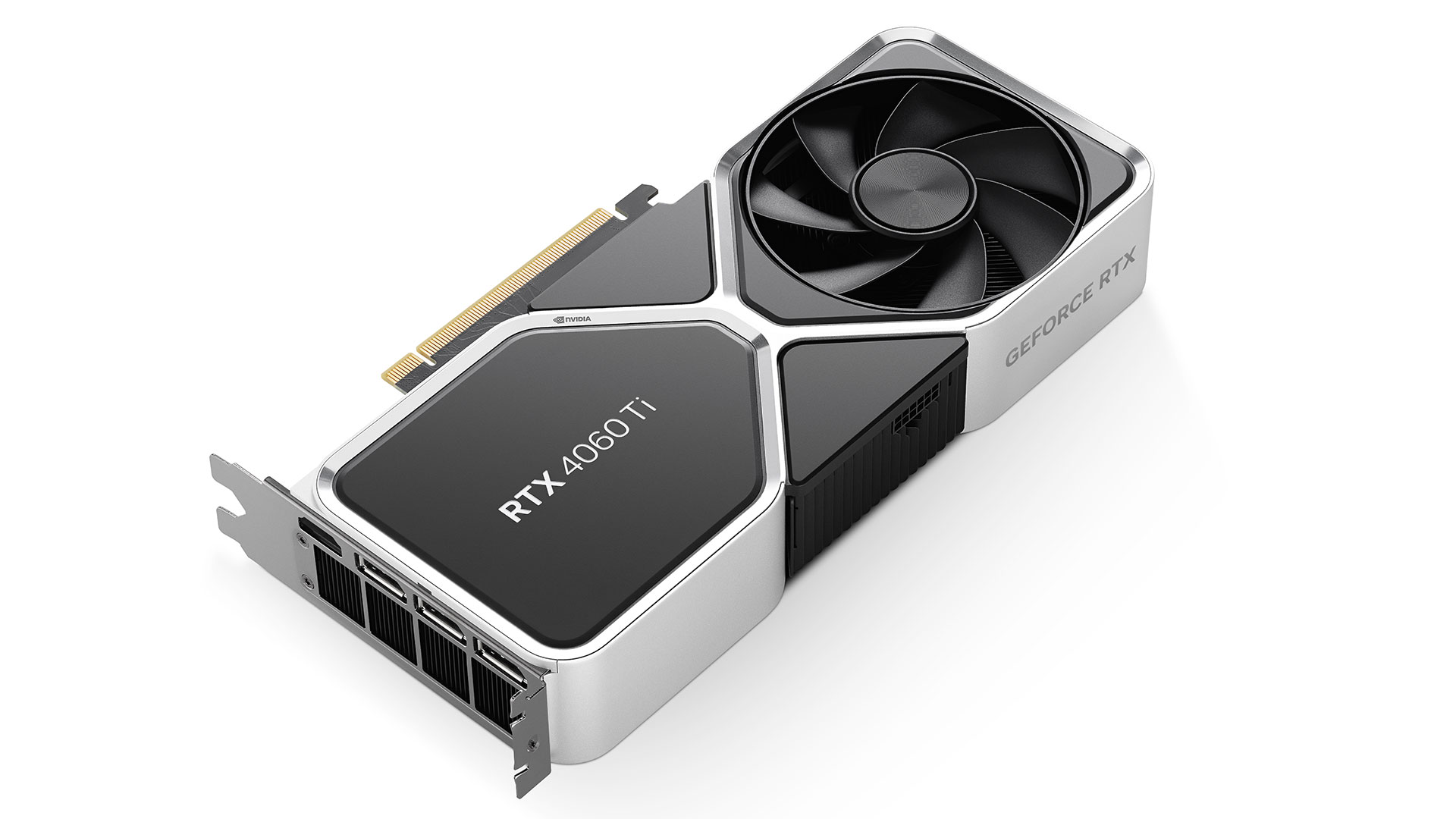

There will be an RTX 4060 Ti Founders Edition, which looks mostly the same as the RTX 4070 Founders Edition (including the oversized box), except the outside shroud is silver rather than slate gray. Note that these cards aren't using the same PCB and other hardware underneath the cooler, as the 4070 cards use AD104 with six 2GB GDDR6X chips, while the 4060 Ti uses AD106 with four 2GB GDDR6 chips.
The RTX 40-series Founders Edition cards have been well received so far, at least in terms of design. And perhaps that's the problem: They're too good. So just like there's no RTX 4070 Ti Founders Edition, there won't be an RTX 4060 Ti 16GB Founders Edition, nor will there be an RTX 4060 Founders Edition. Nvidia's AIB (add-in board) partners will be solely responsible for those GPUs.
Also note that the RTX 4060 Ti Founders Edition still includes the 16-pin 12VHPWR connector. Which is a bit silly, considering this is a 160W card. What on earth does it need a potential 600W connector for? Okay, maybe to communicate with a PSU, but that's pretty niche at best. We expect it will have an adapter cable supplied for those that don't have ATX 3.0 compliant PSUs, which means you'll also get a "lovely" cable sticking six inches out from the top of the card.
RTX 4060 Ti Performance, According to Nvidia
Nvidia has shared details of its own testing with Tom's Hardware and other sites. As usual, healthy doses of skepticism are warranted with any manufacturer benchmarks. You'll see exactly what we're getting at when you check out the charts.
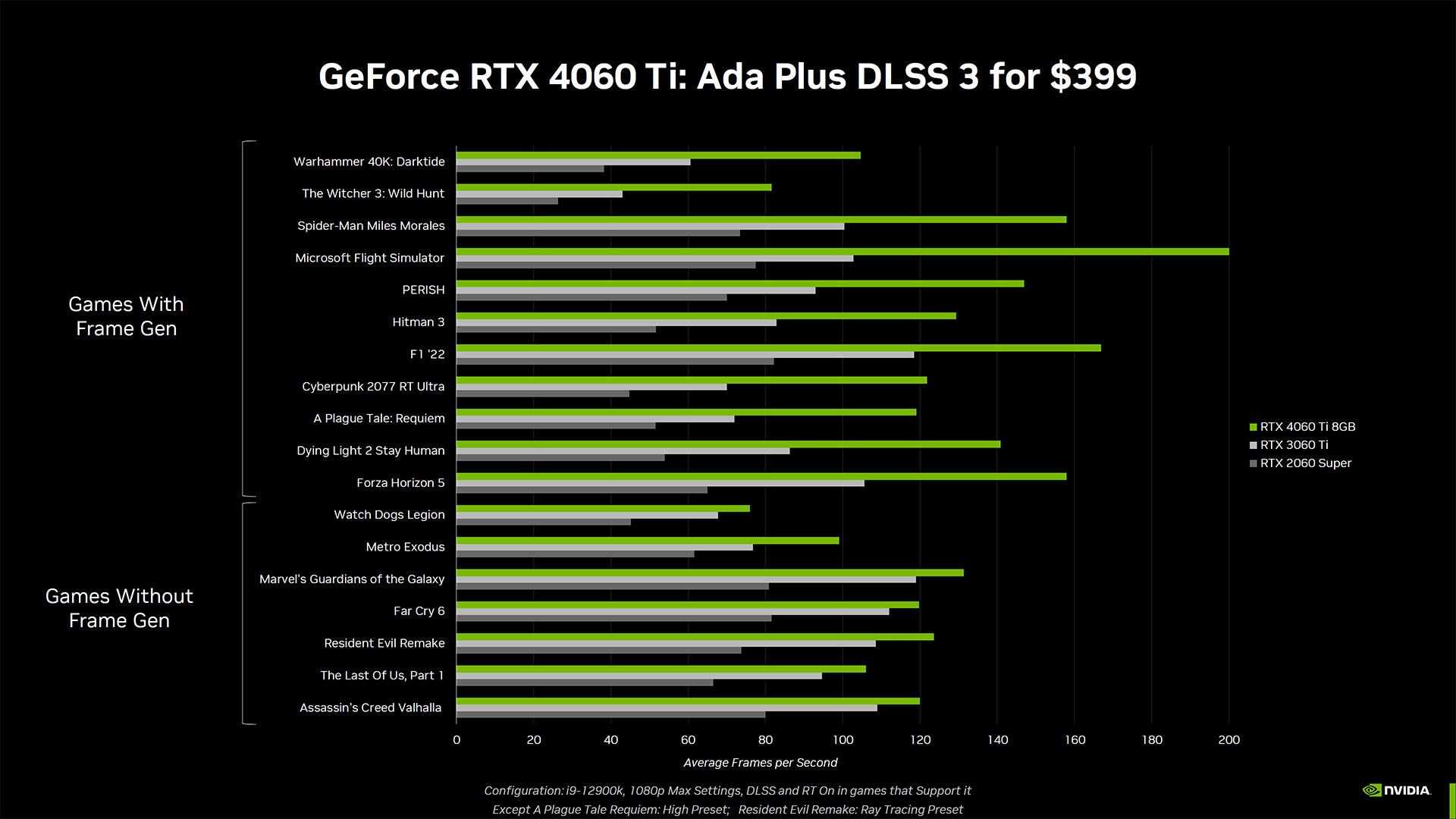
Let's start with the RTX 4060 Ti, which will be launching first. Nvidia ran tests at 1080p and maximum settings (except for in two games where texture quality was set to high), across a test suite of 18 games. That's a pretty good selection of games, but do note the number of DLSS 3 enabled games in that list: 11.
So, 61% of the games that Nvidia chose to use for testing use DLSS 3. There are now over 50 DLSS 3 games announced, and over 300 games with DLSS support, but having a test suite where 100% of the games just happen to support DLSS is certainly helpful for presenting performance in the best light possible. (For reference, 12 of the 15 games in our current test suite support DLSS — many demanding games do. But there are still games that don't support it.)
That's a massive advantage, especially for the bar charts, because DLSS 3 performance isn't quite the same as normal FPS. Frame Generation increases latency, and the interpolated frames don't factor in any new user input. What that means is that a game running at 30 fps without Frame Gen might show performance of 60 fps with Frame Gen, but it will still feel like it's running at 30 fps. How much that matters can vary by the type of game and the base framerate, but, to me, Frame Gen feels more like 10–20 percent smoother for a 50% increase in supposed FPS.
Or if you prefer, cut off about half of the RTX 4060 Ti bar relative to the RTX 3060 Ti — meaning, Warhammer 40K: Darktide would feel more like ~82 fps rather than the ~104 fps shown on the charts. It's still clearly better than the 3060 Ti's ~60 fps, but it's not going to feel ~75% faster. Alternatively, you can choose to ignore the Frame Gen portion of the charts and just look at the bottom seven games that don't support DLSS 3.
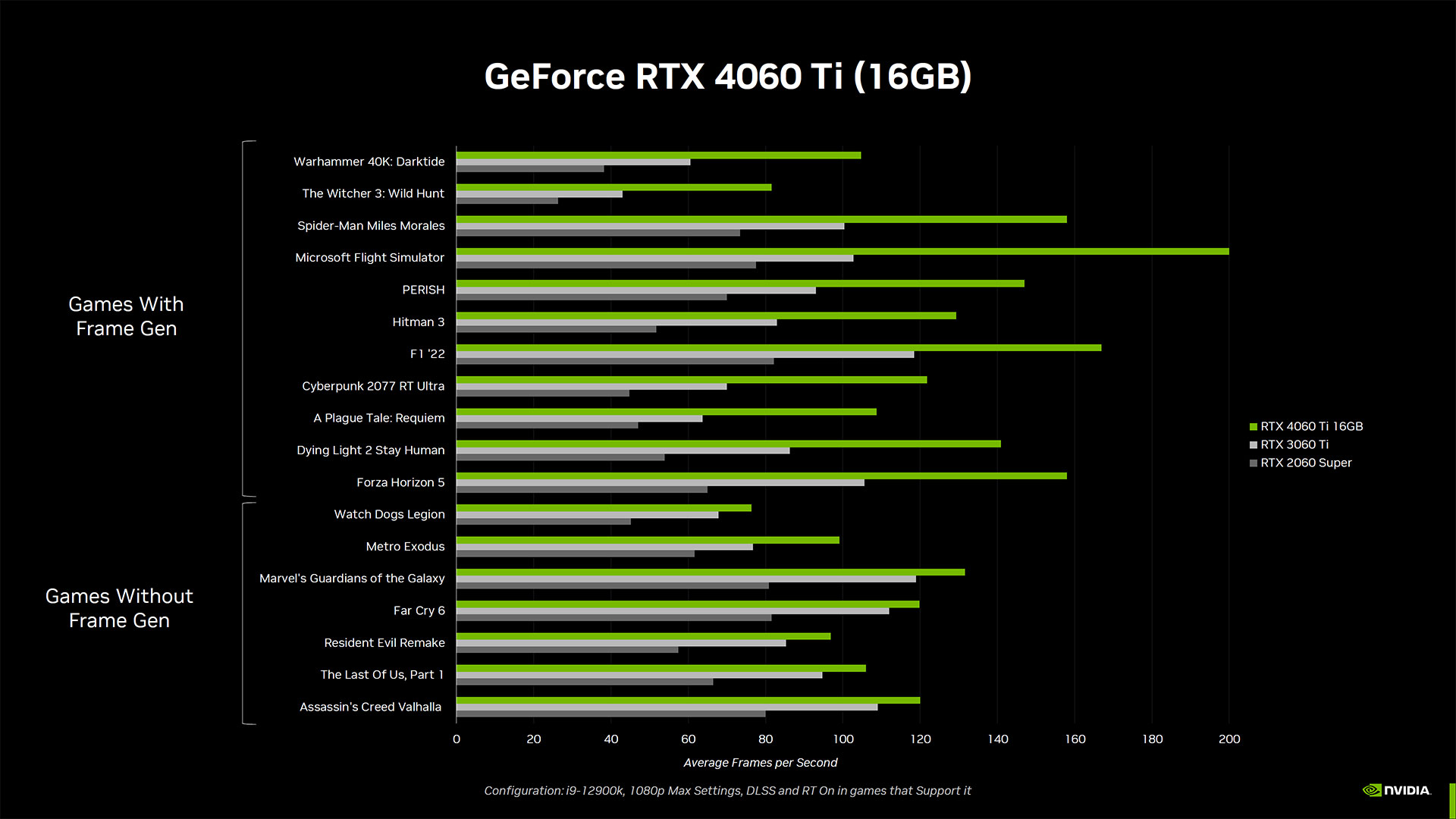
Next up, we have Nvidia's results for the RTX 4060 Ti 16GB. This time, A Plague Take: Requiem and Resident Evil Remake aren't using high quality textures, which means cards with only 8GB like the RTX 2060 Super and RTX 3060 Ti will run worse. The 4060 Ti would also take a performance hit, but the added VRAM on the 16GB model means it at least isn't having to swap textures in and out of memory.
The two charts otherwise show identical performance for both the 8GB and 16GB RTX 4060 Ti, which is expected. Except there's always a bit of variation between runs, so again, take these charts with a spoonful of salt. We'll have our RTX 4060 Ti 8GB review up next week for the launch, but we won't be able to test the 16GB model until July.


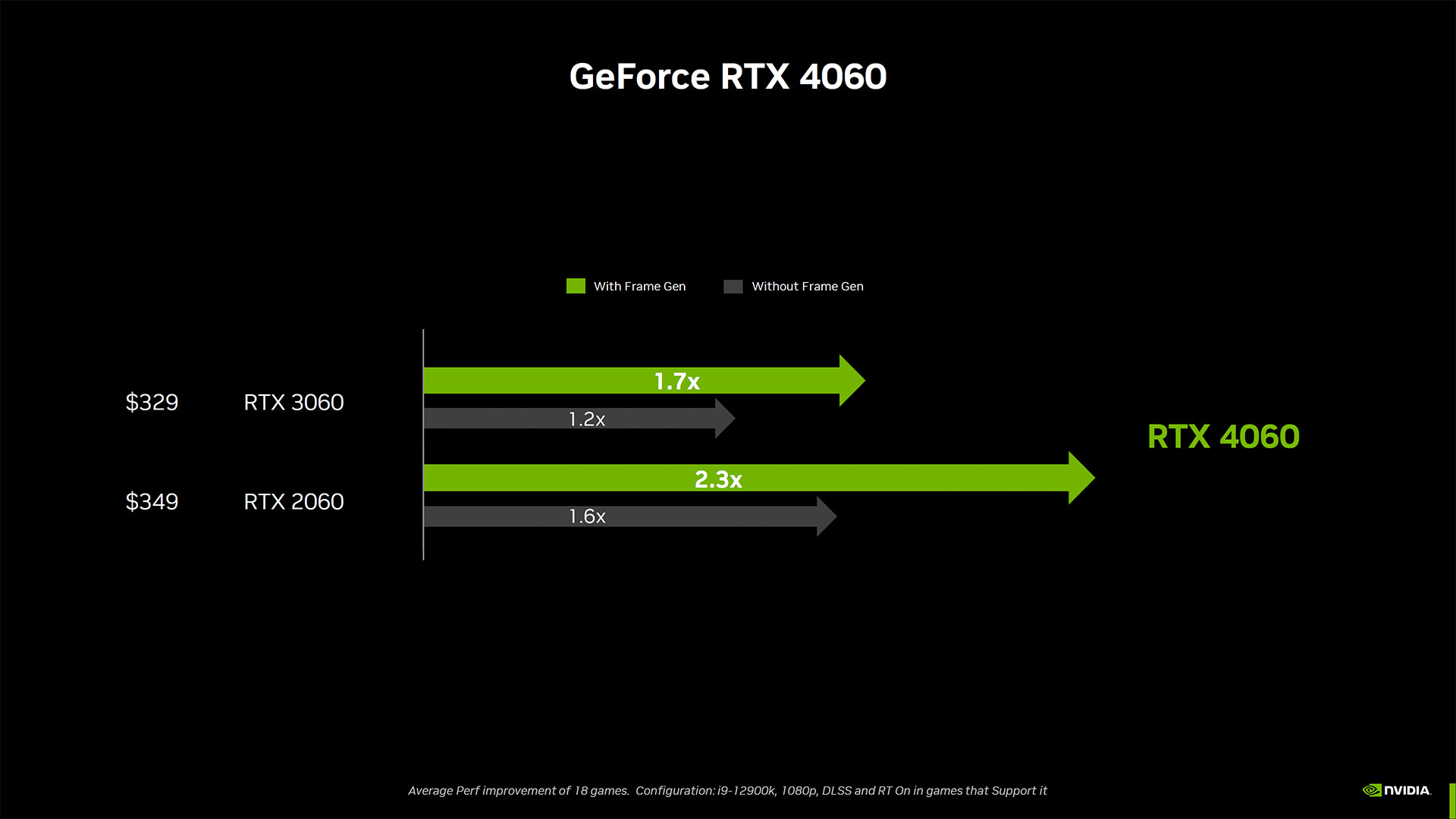
Nvidia also provided a preview of the RTX 4060 card's performance, using the same DLSS 3 heavy test suite. This time, it's going up against the RTX 3060 and RTX 2060, so it has less memory than the 3060 12GB but more memory than the 2060 6GB. But since it's mostly intended to be used for 1080p gaming, you can be reasonably confident that most games won't need more than 8GB.
And for those games that do exceed 8GB? Turn down the texture settings a notch. As we explained recently in our why does 4K gaming require so much VRAM article, higher resolution textures aren't really necessary at 1080p — game engines will often stick with 1K textures due to mipmapping, or if they do load in 2K textures, it won't make much of a difference in image quality.
Anyway, back to the charts, Nvidia chose settings to keep VRAM use below 8GB. That's okay, and it's what we'd do if we were playing games on an 8GB card, but do note that some titles will need a few tweaks to keep performance acceptable. Nvidia also provided a second chart of the 1% low FPS, to illustrate how smooth games feel. Most of the games have 1% lows above 60 fps, which is great, though the Witcher 3: Wild Hunt next-gen update, Watch Dogs Legion, and Metro Exodus (Enhanced? We don't know) all come up a bit short.

RTX 4060-Series Reveal, Closing Thoughts
In some ways, these are the least exciting GPUs of the RTX 40-series. That's because we've had faster GPUs for over two years now. But they're also the most exciting because they bring new features and new levels of performance to the midrange graphics card market. Based on Nvidia's performance charts, and not factoring in DLSS 3, we're looking at a relatively modest improvement over the previous generation hardware.
Without Frame Gen, Nvidia says the RTX 4060 Ti is only 15% faster than the RTX 3060 Ti. Yes, it's the same price, but if you wanted 15% more performance you've had that option with the RTX 3070 for over two years now — the 3070 is 12–16 percent faster than the RTX 3060 Ti, going by our latest GPU benchmarks. Similarly, the RTX 4060 according to Nvidia's data is about 20% faster than the RTX 3060, not including Frame Gen. Of course, it's priced better at $299, but that's two years of waiting to get a card that is, ultimately, not even as fast as an RTX 3060 Ti (which is 30–35 percent faster than a 3060).
But there's still that Frame Gen wild card, and other benefits are also present. With Frame Gen enabled, Nvidia says the 4060 is 70% faster than a 3060, and the 4060 Ti is also 70% faster than the 3060 Ti. Again, I'd split the difference and say that in games with DLSS 3 support, the new 4060-series cards will end up feeling about 40% faster than their predecessors. That's good progress, even if we've been able to pay for that level of performance before.
We're also getting this level of performance while cutting power costs — the RTX 4060 may only end up being about the same level of performance as an RTX 3060 Ti, but it has a 115W TGP compared to the older card's 200W TGP.
The bigger question will be how the new Nvidia cards compete against AMD's offerings. Most likely, it's going to be more of the same: Significantly better ray tracing performance, DLSS as a performance multiplier, but rasterization performance may favor AMD in some cases. But when we look at RTX 4060 for $299, and the rumored RX 7600 for the same $299, that seems like one matchup where Nvidia can win handily. We'll find out soon enough!
Nvidia has set the launch date for the RTX 4060 Ti 8GB card for May 24, and as usual you can expect reviews of the Founders Edition and non-overclocked models to go live the day before. Too bad we'll have to wait another six weeks (give or take) before the RTX 4060 Ti 16GB and RTX 4060 land.






























Above is the full slide deck from the Nvidia briefing, should you wish to see any of the slides that we didn't cover.







